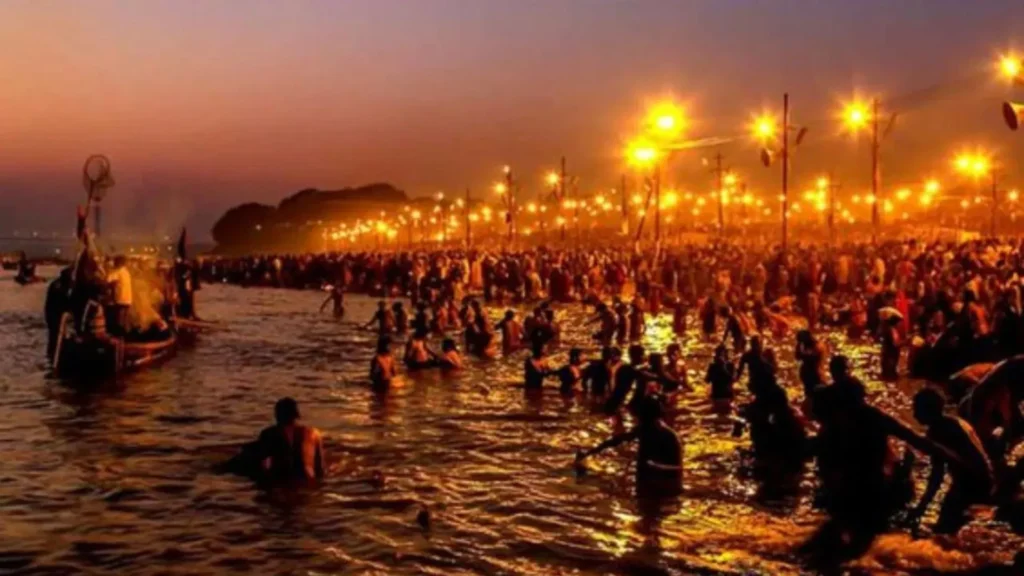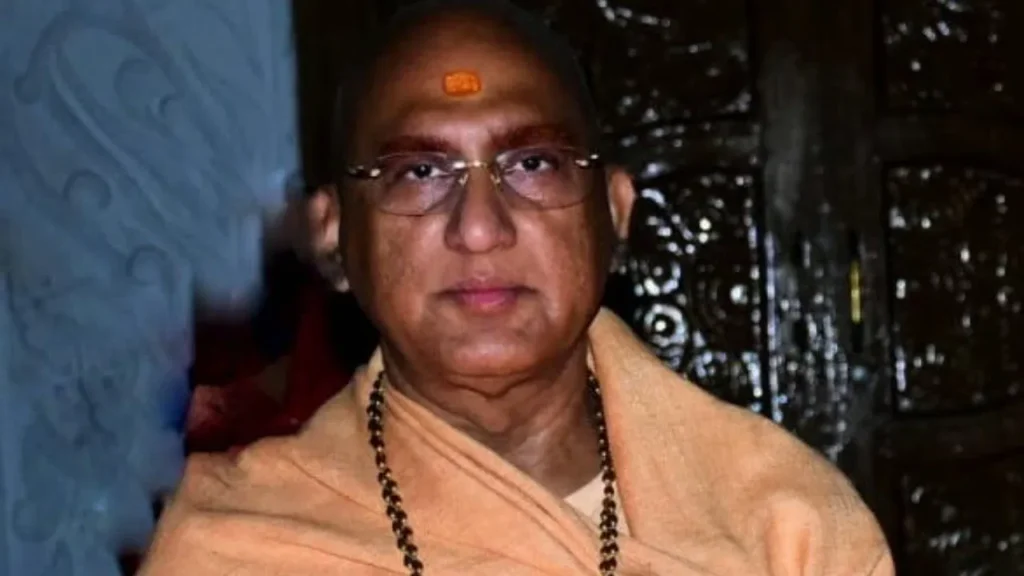Introduction
The Maha Kumbh Mela 2025, currently taking place in Prayagraj, Uttar Pradesh, is the largest religious congregation in history. Spanning from January 13 to February 26, 2025, this grand Hindu festival is attracting over 500 million pilgrims, saints, and tourists from around the world.
Held once every 144 years, the Maha Kumbh Mela is the rarest and most spiritually significant of all Kumbh Melas. Devotees believe that taking a holy dip at the Triveni Sangam—the confluence of the Ganga, Yamuna, and Saraswati rivers—washes away sins and grants moksha (liberation from the cycle of rebirth).
With record-breaking attendance, unparalleled logistical planning, and profound spiritual energy, the Maha Kumbh Mela 2025 is a historic and transformative event.

Historical, Mythological, and Astrological Significance
Mythology and the Origin of Kumbh Mela
According to Hindu scriptures, the Kumbh Mela originates from the legend of Samudra Manthan (Churning of the Ocean), where:
The Devas (gods) and Asuras (demons) churned the Ksheer Sagar (cosmic ocean) to extract Amrit (nectar of immortality).
As they fought over the nectar, drops of Amrit fell at four sacred locations—Prayagraj, Haridwar, Nashik, and Ujjain.
These sites became the centers of Kumbh celebrations, where ritualistic bathing is believed to cleanse sins and lead to spiritual liberation.
The 144-Year Cycle of the Maha Kumbh
The Maha Kumbh follows a strict astrological cycle, occurring when:
Jupiter is in Aries,
Sun in Capricorn, and
Moon in Aquarius.
This alignment is believed to amplify spiritual energy, making the Maha Kumbh a once-in-a-lifetime opportunity for devotees.

Scale of Maha Kumbh 2025: Unprecedented Numbers
This year’s Maha Kumbh is breaking all previous records, making it the largest human gathering ever.
| Key Statistic | Maha Kumbh 2025 Figures |
|---|---|
| Total Pilgrims Expected | 500+ million (50 crore) |
| Peak Attendance on Mauni Amavasya (Jan 29, 2025) | Over 40 million (4 crore) |
| Total Area Covered | 4,000 hectares (~10,000 acres) |
| Tents Installed for Pilgrims | 1.5 million |
| Sanitation Facilities | 200,000 bio-toilets |
| Security Personnel Deployed | 50,000+ police and paramilitary forces |
| Economic Impact | ₹2 lakh crore ($24 billion USD) |
| Jobs Created | 1 million+ employment opportunities |

Interviews and Expert Opinions
Perspectives from Devotees
🔹 Rajesh Mishra, a 65-year-old pilgrim from Varanasi, shares:
“I have attended Kumbh Melas before, but Maha Kumbh is special. The energy, the faith, and the devotion here are unlike anything else. Bathing in the Sangam on Mauni Amavasya felt like being reborn.”
🔹 Anjali Verma, a 28-year-old devotee from the USA, says:
“As an Indian-American, this experience is life-changing. Seeing millions of people come together with pure devotion shows the power of faith. It’s overwhelming and beautiful at the same time.”

Insights from Religious Gurus
🔹 Swami Avdheshanand Giri, Mahamandaleshwar of Juna Akhada, explains:
“The Maha Kumbh is not just a festival, it is a spiritual revolution. It reminds us of our eternal connection with divinity. Bathing in the Sangam is not just about water, it is about inner purification.”
🔹 Sri Sri Ravi Shankar, founder of Art of Living, states:
“Kumbh Mela is a time for self-reflection, meditation, and unity. It brings millions together beyond caste, creed, and nationality. The spiritual vibrations here are unparalleled.”
Views from Historians and Scholars
🔹 Dr. Ramesh Bhardwaj, Indologist at Delhi University, highlights:
“Historically, Kumbh Melas have been intellectual and cultural hubs. Ancient scholars, poets, and spiritual teachers gathered here to exchange knowledge. Even in modern times, the Maha Kumbh remains a powerful cultural phenomenon.”
🔹 Professor Meenakshi Jain, historian, adds:
“The sheer scale of the Maha Kumbh reflects India’s civilizational continuity. It is a reminder that traditions from thousands of years ago are still alive and thriving.”
Challenges and Security Measures
Managing such a massive crowd comes with challenges. The authorities have taken extraordinary measures for security and crowd control.
Stampede Prevention & Security Upgrades
🔹 Enhanced Surveillance
50,000+ police officers, paramilitary forces, and intelligence units
Drones, AI-powered facial recognition, and 1,500+ CCTV cameras
🔹 Medical Emergency Response
200+ temporary hospitals and 5,000+ ambulances
24/7 medical camps every 500 meters

Environmental Impact and Sustainability Efforts
Given the massive environmental footprint, authorities have implemented sustainability initiatives.
🔹 Eco-Friendly Sanitation
200,000 bio-toilets to prevent river pollution
Water treatment plants installed to keep the Ganga clean
🔹 Waste Management
1,000+ recycling centers for plastic and biodegradable waste
“Clean Kumbh, Green Kumbh” campaign to encourage pilgrims to maintain cleanliness
🔹 Ban on Plastic and Non-Degradable Items
Authorities have enforced a strict ban on plastic, replacing them with eco-friendly alternatives.
🔹 Volunteer-Driven Clean-Up Drives
Over 10,000 volunteers are ensuring daily clean-up operations along the Ghats and surrounding areas
Economic Impact and Tourism Boom
🔹 Revenue Generation
₹2 lakh crore ($24 billion USD), expected from tourism, trade, and religious tourism.
Local businesses, hotels, transport services, and food vendors are witnessing record profits.
🔹 Job Creation
1 million+ employment opportunities across sectors like hospitality, transportation, security, and retail.
🔹 International Participation
Over 100,000 foreign tourists from countries like USA, UK, Russia, Japan, and Australia have attended the event.

Conclusion: A Testament to India’s Spiritual and Cultural Legacy
The Maha Kumbh Mela 2025 is more than a religious gathering—it is a global spiritual event, an economic catalyst, an environmental challenge, and a cultural marvel.
Despite its complex logistics and challenges, the Maha Kumbh remains a symbol of India’s enduring spiritual traditions. As millions continue to take the holy dip in the Triveni Sangam, the festival serves as a reminder of faith’s ability to transcend time and unite humanity.
As Swami Vivekananda once said:
“Faith in oneself and faith in God—this is the secret of greatness. The Kumbh embodies both.”The Maha Kumbh Mela 2025 is more than a religious gathering—it is a global spiritual event, an economic catalyst, an environmental challenge, and a cultural marvel.
Despite its complex logistics and challenges, the Maha Kumbh remains a symbol of India’s enduring spiritual traditions. As millions continue to take the holy dip in the Triveni Sangam, the festival serves as a reminder of faith’s ability to transcend time and unite humanity.
As Swami Vivekananda once said:
“Faith in oneself and faith in God—this is the secret of greatness. The Kumbh embodies both.”

